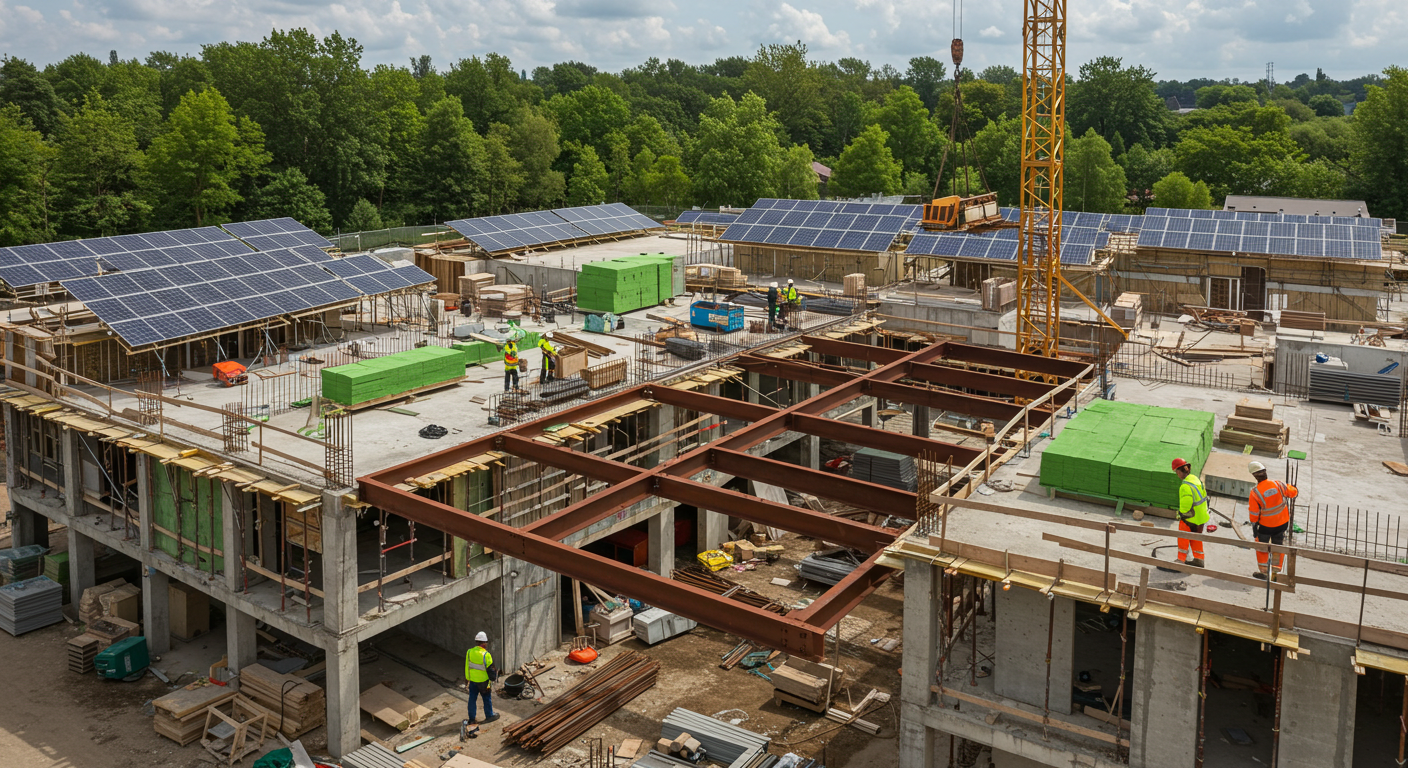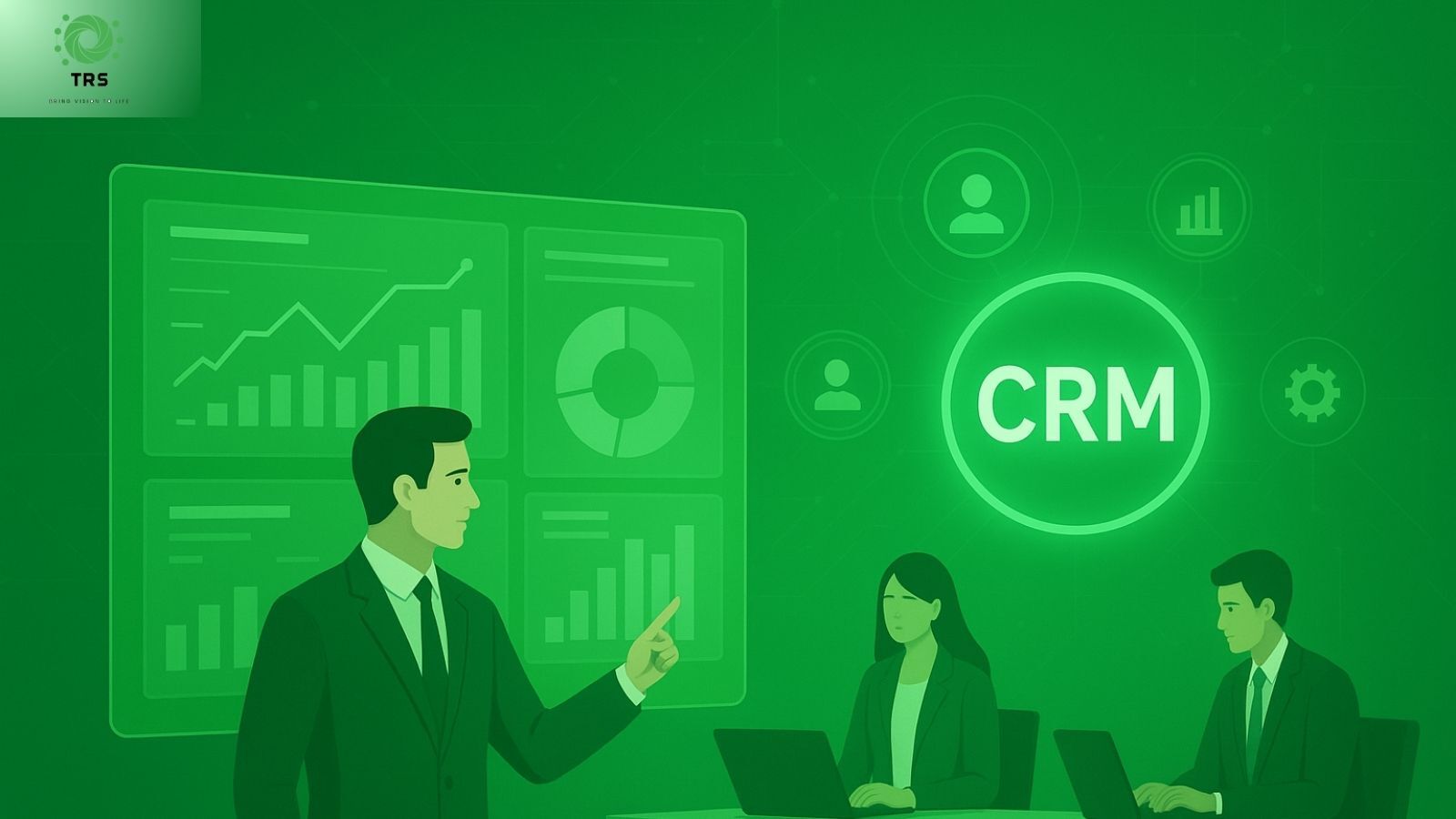Sustainable construction is building in a manner that has the least environmental impact, saves the necessary resources, and promotes the health of the community. To be more specific, sustainability in construction can be made better by concentrating on materials that are environmentally friendly, energy-saving, reducing waste, and using the right design practices.
Sustainability is no longer a matter of choice, it is a must. Clients, governments, and communities are, on the whole, looking for construction companies that are inclined to adopt green practices. Early planning, effective takeoffs construction, and choosing environmentally responsible methods can lead to long-term savings while also protecting the planet.
Importance of Sustainability in the Construction Industry
The construction industry is the biggest culprit regarding the release of carbon dioxide and the production of waste. The energy, water, and raw materials used in traditional construction are enormous. By going green, the industry can:
- Lower Carbon Dioxide Emissions.
- Save Natural Resources.
- Reduce the Cost of the Building that the Owners will have to Maintain.
- Improve their Standing and Comply with Regulations.
Green energy is not just a matter of the environment, it also makes economic sense and promotes social welfare, thus becoming a complete package of future-ready construction.
Energy Efficiency in Construction Projects
Energy efficiency should be implemented at the very beginning with the design, and the whole process should continue through the operation. The use of high-performance insulation, double-glazed windows, and energy-efficient HVAC systems not only helps to save the energy consumed but also contributes to the reduction of heat loss through the building envelope. The equipment and lighting used at construction sites can also be energy efficient, which could lead to lessening of energy waste.
On-Site Renewable Energy Integration
Nowadays, some projects are combining renewable sources, such as solar panels for temporary site power and wind turbines for supplemental energy, to provide energy. Apart from cutting down on the use of fossil fuels, these moves also offer the opportunity to test the long-term performance of the building.
Sustainable Building Materials
One of the most effective ways to reduce a building’s environmental footprint is to choose the right materials.
Recycled and Reclaimed Materials
Fly ash concrete, wood that has been rescued from landfills or old buildings, and steel that is recycled are just some of the materials that are used to reduce the consumption of new raw materials.
Locally Sourced and Low-Carbon Materials
Significant amounts of carbon dioxide are emitted in the process of transporting materials. Besides reducing transportation energy, the use of locally available and low-carbon materials also supports local economies.
Waste Reduction and Recycling Strategies
One of the largest sources of waste is construction. Effective planning is the key to reducing waste at every level.
| Waste Management Strategy | Benefit | Example |
| Source segregation | Easier recycling | Separate bins for concrete, wood, and metal |
| Reuse of materials | Cost savings | Using formwork multiple times |
| Circular economy design | Long-term impact | Designing with recyclable finishes |
One of the most effective waste management measures on a construction site is to strictly abide by the waste material protocols. As a result, the materials will have to be reused, recycled, or disposed of properly.
Water Conservation in Construction
Water scarcity is a worldwide problem, and construction sites are unreasonably consuming the water resource.
Water-Efficient Methods
Use of pre-mixed concrete, water recycling for dust suppression, and the installation of water-efficient plumbing are measures that can be taken to reduce water consumption.
Greywater and Rainwater Harvesting Systems
One of the most efficient ways to conserve water is to build water recycling systems in buildings; hence, sustainability will continue after the construction period.
Green Building Certifications and Standards
This confirms that the sustainability objectives of the organization have been achieved by the adoption of well-structured means.
- LEED (Leadership in Energy and Environmental Design) mainly deals with energy, materials, and site impact.
- BREEAM (Building Research Establishment Environmental Assessment Method) focuses on the processes and measures that improve the overall environmental performance of the building.
- The standard of WELL building emphasizes human health and comfort.
Moreover, certification can increase the value of the property and can be a great tool to win client confidence.
Lifecycle Assessment (LCA) of Buildings
Green measures in the construction phase do not represent the end of the road; rather, it is the sustainable use of the building in the future and the period when it will be demolished that counts.
Evaluating Impact Across Stages
Lifecycle assessment literally tracks all the resource consumption, emissions, and waste generation along with the processes from the design stage to demolition. The identification of hotspots in this way would enable decision-makers to select activities that have the capacity to positively affect the environment in the long term.
Sustainable Site Selection and Planning
Location is equally important as the building’s properties.
- Not Using Areas that are Sensitive to Nature.
- Sites with Existing Facilities can be Chosen to Lessen the Disturbance of the Land.
- Making sure that Public Transport can be used to Cut down on Carbon Emissions in the Future.
Careful planning leads to less environmental and social costs over time.
Sustainable Design Principles
Sustainability through design is very important.
Passive Design Techniques
The use of natural ventilation, daylighting, and thermal mass in the design can significantly reduce the reliance on mechanical systems.
Maximizing Natural Light and Ventilation
The buildings with large windows, atriums, and open layouts typically use less artificial lighting and cooling.
Smart Technologies for Sustainable Construction
Efficiency is greatly enhanced by technology, and less waste is produced.
Building Information Modeling (BIM)
With the use of Building Information Modeling (BIM), designers can be very accurate in their planning; hence, the chances for design flaws, material waste, and energy consumption are dramatically lowered.
IoT and Energy Management
Energy smart meters and Iot sensors that help in the monitoring of energy, water, and material usage in real time, making the process of adjusting much more convenient.
Renewable Energy Integration in Buildings
Building energy that is renewable and green will keep constructions sustainable for a long time.
- Solar Energy is Generated by Solar Panels Installed on the Building’s Roof.
- Small-sized Wind Turbines that Produce Electricity for Buildings in Adequate Locations.
- Efficient Energy Consumption through Geothermal Heating and Air Conditioning.
One of the most important components of an energy system is resilient energy storage solutions such as modern batteries.
Sustainable Supply Chain Management
Supply chains affect sustainability directly in a sustainable manner.
Partnering with Eco-Friendly Suppliers
The builders must ensure that the materials they procure from the market meet green standards. They can do so by collaborating with certified suppliers who use sustainable procedures to get the raw materials.
Tracking Carbon Footprint
Nowadays, the use of digital tools to track and report emissions across the supply chain has made accountability the rule instead of the exception.
Health and Well-being in Sustainable Buildings
Environmental and human health are at the core of True sustainability.
- The Indoor Air Quality is Greatly Improved with the use of Ventilation and Filtration.
- The use of Non-toxic Paints and Adhesives in Construction.
- Comfortable Lighting and Soundproof Walls for the Wellness of the Building’s Inhabitants.
Consequently, people get to enjoy the full benefits of sustainability in combination with and beyond energy-saving practices.
Government Regulations and Incentives
Governments are enforcing green construction more and more.
- The Regulations Include Mandatory Energy Codes and Waste Disposal Laws.
- Incentives Shall Mean, among others, Tax Credits, Grants, and Subsidies for Renewable Energy, Green Roofs, and Certified Buildings.
These steps motivate developers to embrace sustainability with lower amounts of cash out of their pockets.
Challenges in Implementing Sustainable Construction
Sustainable construction is faced with the following problems, despite its benefits:
- Higher Initial Costs Compared to Traditional Methods.
- The Supply of Skilled Professionals is very Limited.
- There are Myths about the Performance and Longevity of Green Materials.
Overcoming these issues will require awareness, training, and co-operation across the industry.
Future Trends in Sustainable Construction
The future is long-lasting and sustainable with creative and holistic approaches.
- Net-zero Carbon Buildings that Generate as Much power as they Consume.
- Carbon-neutral Constructions along with Carbon-capturing Technologies.
- AI and Robotics help Increase the Precision of the Work, decrease the Number of Mistakes, and Lessen the Amount of Scrap Material.
These are the main trends of the next era of construction.
Conclusion: The Path to a Greener Future in Construction
Making construction more sustainable is a big challenge that requires proper planning, out-of-the-box designing, taking responsible actions, and thinking long-term. The difficulties are still there; however, by following the good practices of efficient energy use, waste reduction, and the use of eco-friendly materials, the industry will be able to cast a bright and green future.
FAQs
Q1: What is the easiest way to make construction more sustainable?
The simplest step is the use of energy-efficient equipment and recycled materials, which not only lowers the costs but also the environmental impact.
Q2: Are sustainable buildings more expensive to construct?
They can be more expensive initially; however, operating savings and overall benefits will often be more than the costs.
Q3: How do certifications like LEED help?
One of the biggest advantages they offer is providing clear-cut criteria for green standards, giving a rise to the value of your property and making other people believe in you.
Q4: Are small construction projects also capable of being green?
Indeed, even the tiny ones can implement waste reduction, local sourcing, and energy-efficient design.
Q5: What is the role of technology in sustainable construction?
The integration of technologies such as BIM, IoT, and AI in the construction sector leads to achieving the productivity goal by reducing the mistakes made by human labor and by better utilization of the resources.


